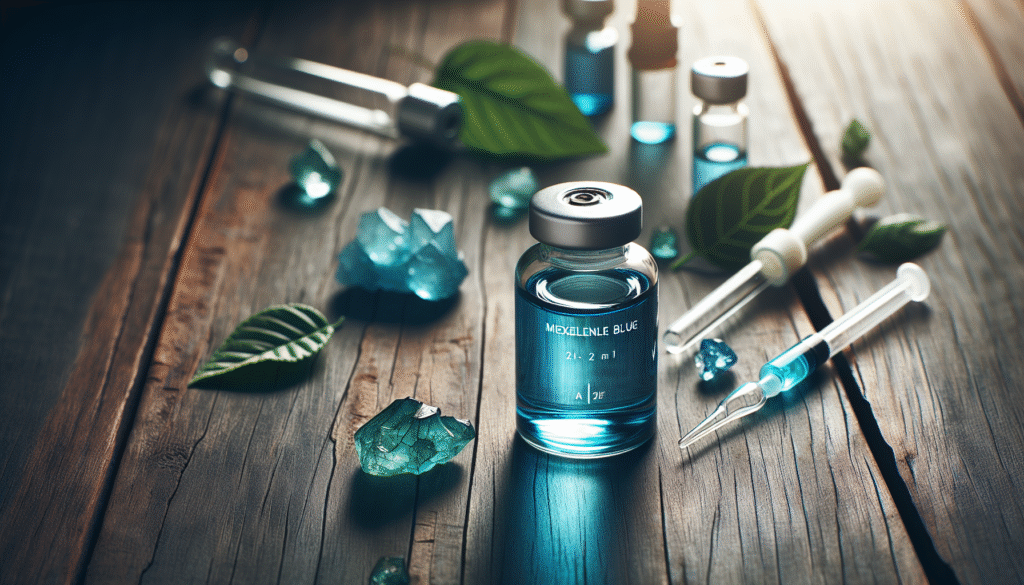
Have you ever found yourself overwhelmed by the myriad of options available for a single product? When it comes to choosing the right methylene blue product, the situation can be particularly complex. With its varied applications ranging from scientific research to health and wellness, selecting the ideal formulation and concentration can significantly impact your results.
Understanding Methylene Blue
Methylene blue is a synthetic dye that has a wide range of applications. Originally developed in the 19th century, it was primarily used as a dye for textiles and other materials. However, its use has evolved considerably over the years. Today, methylene blue is employed in various fields including medicine, research, and environmental science. Understanding its uses will guide you towards making an informed choice.
Medical Applications
In the medical field, methylene blue is known for its properties as an antiseptic and as a treatment for conditions such as methemoglobinemia, a disorder that affects the blood’s ability to transport oxygen. Its effectiveness in these applications hinges on the quality and concentration of the product you choose. Understanding these specific medical applications can help you determine whether you need a pharmaceutical-grade product or something more general.
Research Applications
In laboratory settings, methylene blue is often used as a stain in biological studies and as an indicator in chemical reactions. If you are purchasing methylene blue for research purposes, the specifications regarding purity and concentration should be prioritized. This ensures that the results of your experiments are reliable and valid.
Environmental Science
Methylene blue plays a role in environmental science, often used in tests for the presence of specific bacteria in water. For these purposes, you will want to ensure that you are using a formulation that is safe for the ecosystem, taking care to choose a product that meets environmental regulations.
Types of Methylene Blue Products
When searching for the right methylene blue product, you will encounter several types. Each type serves different purposes and comes in various forms. Let’s break down the most common types.
Pharmaceutical Grade
Pharmaceutical-grade methylene blue is highly purified and adheres to stringent industry standards. It is used in medical settings, making it crucial for those requiring a product for treatment. Always check for certification when purchasing this type to ensure safety and efficacy.
Laboratory Grade
Laboratory-grade methylene blue is designed for research applications. This variant may not meet the same stringent standards as pharmaceutical-grade but is still highly reliable for laboratory work. Depending on the required purity for your studies, you may find that laboratory-grade suffices.
Industrial Grade
This type is typically not recommended for medical or laboratory use due to lower purity levels. While it can be suitable for certain industrial applications, it may contain impurities that could affect results or safety. It is crucial to avoid using industrial-grade methylene blue in any sensitive application.
Food Grade
Food-grade methylene blue is less common but is used in some culinary applications. If you are considering this option, verify that it meets food safety regulations in your region. This can be particularly vital if you are using it for flavor or color purposes in food products.

Concentration Levels and Their Importance
The concentration of methylene blue in a product can significantly influence its effectiveness for your intended application.
Understanding Concentration
Methylene blue is typically available in various concentrations, usually ranging from 0.1% to 10%. The concentration refers to the proportion of methylene blue in the solution. Higher concentrations are generally used for more intensive medical treatments, while lower concentrations may suffice for research or environmental applications.
Choosing the Right Concentration
-
Medical Use: If you need methylene blue for medical purposes, consult with a healthcare professional to determine the appropriate concentration for your condition.
-
Research Use: When used in a research setting, the needed concentration often depends on the specifics of the experiment. Research papers or guidelines for specific assays will detail required concentrations.
-
Environmental Testing: For environmental applications, concentration guidelines may be specified in testing methods, ensuring accurate results.
Evaluating Product Quality
The quality of methylene blue can directly impact its effectiveness. Here are a few factors to consider when assessing product quality.
Purity
Purity is a crucial factor when choosing a methylene blue product. Higher purity levels will yield more reliable results whether used in laboratory settings or for therapeutic purposes.
Certification
Look for certifications that verify the product’s quality and adherence to safety standards. This may include certifications from health organizations or laboratories that perform quality checks.
Source
Understanding where the methylene blue is sourced from can provide insight into its quality. Reputable manufacturers will typically be transparent about their sourcing practices and production methods.

Packaging and Storage
How methylene blue is packaged and stored can also affect its longevity and efficacy.
Packaging
Choose products that are securely packaged to avoid contamination. Amber glass bottles can protect the content from light degradation, ensuring a longer shelf-life.
Storage Conditions
Follow specific storage recommendations according to the product label. Most methylene blue products need to be stored in a cool, dark place to maintain their integrity.
Price Considerations
While price should not be the sole determinant in your decision-making process, it is crucial to ensure value for your investment.
Comparisons
Before settling on a product, compare prices across various retailers. Keep in mind that higher costs may reflect better quality and more rigorous production standards.
Budgeting
Establish a reasonable budget for your purchase. Allocate funds not only for methylene blue itself but also for any additional tools you may need, such as measuring equipment, protective gear, or storage solutions.
Safety Considerations
Safety should always be a priority when handling chemical substances, including methylene blue.
Handling Precautions
Wear appropriate protective equipment such as gloves and eyewear while handling methylene blue, especially during measurement and application.
First Aid Measures
Familiarize yourself with first aid measures in case of accidental exposure. It is important to know how to respond effectively to minimize adverse effects.
Environmental Safety
Evaluate the environmental impact of using methylene blue. Always follow disposal regulations and guidelines to reduce harm to your surroundings.
User Reviews and Recommendations
Reading user reviews can provide valuable insights that product specifications may not cover.
Testimonials
Look for testimonials from users who have utilized the same product for similar purposes. Their experiences can highlight both strengths and weaknesses.
Professional Opinions
If you can, consult with a professional in the field regarding the best methylene blue products for your specific needs. Their expertise can guide you towards a well-informed decision.
Conclusion
Choosing the right methylene blue product can indeed be a daunting task, but with a structured approach, you can navigate this process with confidence. Understanding the different applications, types, concentrations, and quality assessments will empower you to make an informed choice tailored to your particular needs.
Key Takeaways
- Identify your specific application (medical, research, environmental).
- Consider product types and concentration levels that align with your purpose.
- Prioritize purity and certifications to ensure quality.
- Take into account packaging, storage, and safety guidelines.
- Compare prices, review testimonials, and consult professionals before purchasing.
By following these guidelines, you can select a methylene blue product that meets your requirements, ultimately leading to effective results in your intended application. Your health, research, or environmental goals deserve a product that supports them, and with the right knowledge, you can secure just that.